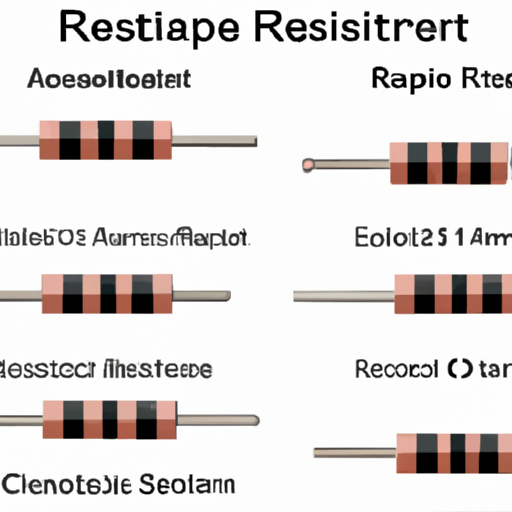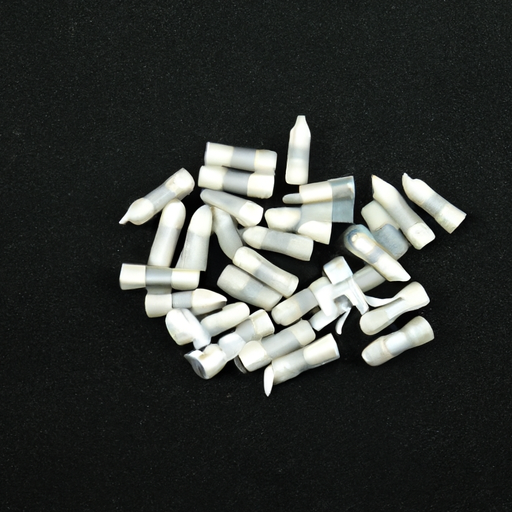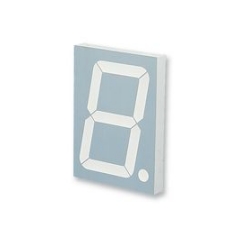The latest resistor resistance value What are the procurement models of equipment components?
The Latest Resistor Resistance Value and Procurement Models of Equipment Components
I. Introduction
Resistors are fundamental components in electronic circuits, serving the crucial role of controlling current flow. They are essential for protecting sensitive components, dividing voltages, and setting bias points in various applications. Understanding resistor resistance values is vital for engineers and designers, as these values directly influence circuit performance. This article aims to explore the latest resistor resistance values and the procurement models for equipment components, providing insights into how these elements interact in the electronics industry.
II. Understanding Resistor Resistance Values
A. Definition of Resistance and Its Measurement (Ohms)
Resistance, measured in ohms (Ω), quantifies how much a resistor opposes the flow of electric current. The relationship between voltage (V), current (I), and resistance (R) is defined by Ohm's Law: V = I × R. This fundamental principle underpins the design and analysis of electronic circuits.
B. Types of Resistors
1. **Fixed Resistors**: These resistors have a constant resistance value and are widely used in various applications. They come in different materials, including carbon film, metal film, and wire-wound types, each offering unique characteristics.
2. **Variable Resistors**: These include potentiometers and rheostats, allowing users to adjust resistance values manually. They are commonly used in applications like volume controls and light dimmers.
3. **Specialty Resistors**: This category includes thermistors, which change resistance with temperature, and photoresistors, which vary resistance based on light exposure. These resistors are crucial in temperature sensing and light detection applications.
C. Latest Trends in Resistor Technology
Recent advancements in resistor technology have led to significant improvements in performance and reliability. Key trends include:
1. **Advances in Materials and Manufacturing Processes**: New materials, such as thin-film and thick-film technologies, have enhanced the precision and stability of resistors. These materials allow for tighter tolerances and better performance in demanding applications.
2. **Miniaturization and Surface-Mount Technology (SMT)**: The trend towards smaller electronic devices has driven the development of miniaturized resistors. SMT components are now standard in modern electronics, enabling compact designs without sacrificing performance.
3. **High-Precision and Low-Tolerance Resistors**: As applications become more sophisticated, the demand for high-precision resistors has increased. These resistors offer low tolerance levels, ensuring consistent performance in critical applications.
III. Factors Influencing Resistor Resistance Values
Several factors can influence the resistance values of resistors, impacting their performance in circuits:
A. Temperature Coefficient of Resistance
The temperature coefficient of resistance (TCR) indicates how much a resistor's resistance changes with temperature. Resistors with low TCR values are preferred in precision applications, as they maintain stable performance across varying temperatures.
B. Material Composition
The material used in resistor construction significantly affects its resistance value and performance. For example, carbon resistors are cost-effective but may have higher noise levels, while metal film resistors offer better stability and lower noise.
C. Environmental Factors
Humidity, exposure to chemicals, and other environmental conditions can alter a resistor's performance. Selecting resistors with appropriate ratings for specific environments is crucial for ensuring reliability.
D. Application-Specific Requirements
Different applications may require resistors with specific characteristics, such as high-frequency performance or power handling capabilities. Understanding these requirements is essential for selecting the right resistor for a given application.
IV. Procurement Models for Equipment Components
A. Overview of Procurement in the Electronics Industry
Procurement in the electronics industry involves sourcing components and materials necessary for manufacturing electronic devices. Efficient procurement strategies are vital for maintaining production schedules and ensuring product quality.
B. Traditional Procurement Models
1. **Direct Purchasing**: This model involves purchasing components directly from manufacturers or distributors. It is straightforward but may not always offer the best pricing or availability.
2. **Bulk Purchasing**: Companies often buy components in bulk to reduce costs. This model can lead to significant savings but requires careful inventory management to avoid excess stock.
3. **Just-in-Time (JIT) Procurement**: JIT procurement aims to minimize inventory levels by ordering components only as needed. This approach reduces holding costs but requires reliable suppliers to avoid production delays.
C. Modern Procurement Models
1. **E-Procurement and Online Marketplaces**: The rise of digital platforms has transformed procurement processes. E-procurement systems streamline purchasing, while online marketplaces provide access to a broader range of suppliers.
2. **Vendor-Managed Inventory (VMI)**: In this model, suppliers manage inventory levels on behalf of the buyer. This approach can enhance efficiency and reduce stockouts, as suppliers have better visibility into demand patterns.
3. **Collaborative Procurement**: Companies may collaborate with other organizations to leverage collective buying power. This model can lead to better pricing and terms, especially for high-volume purchases.
D. Factors Influencing Procurement Decisions
Several factors influence procurement decisions in the electronics industry:
1. **Cost Considerations**: Price remains a primary factor in procurement decisions. Companies must balance cost with quality and reliability.
2. **Supplier Reliability and Quality**: The reputation and reliability of suppliers are critical. Companies often conduct thorough evaluations to ensure they partner with trustworthy suppliers.
3. **Lead Times and Logistics**: Timely delivery is essential for maintaining production schedules. Companies must consider lead times and logistics when selecting suppliers.
V. The Role of Technology in Procurement
A. Impact of Digital Transformation on Procurement Processes
Digital transformation has revolutionized procurement processes, enabling greater efficiency and transparency. Companies can now leverage technology to streamline operations and improve decision-making.
B. Use of Data Analytics and AI in Supplier Selection
Data analytics and artificial intelligence (AI) are increasingly used to analyze supplier performance and optimize selection processes. These technologies can identify trends and predict potential issues, enhancing procurement strategies.
C. Blockchain Technology for Transparency and Traceability
Blockchain technology offers a secure and transparent way to track the supply chain. This can help prevent counterfeit components and ensure compliance with regulations.
D. Automation in Inventory Management and Order Fulfillment
Automation tools can enhance inventory management and order fulfillment processes, reducing manual errors and improving efficiency. Companies can use automated systems to monitor stock levels and reorder components as needed.
VI. Challenges in Resistor Procurement
A. Supply Chain Disruptions and Their Impact on Availability
Recent global events have highlighted the vulnerability of supply chains. Disruptions can lead to component shortages, impacting production schedules and increasing costs.
B. Quality Control and Counterfeit Components
The prevalence of counterfeit components poses a significant challenge in procurement. Companies must implement stringent quality control measures to ensure the authenticity of components.
C. Managing Obsolescence and Lifecycle of Components
As technology evolves, components can become obsolete. Companies must proactively manage the lifecycle of components to avoid disruptions in production.
D. Regulatory Compliance and Environmental Considerations
Compliance with regulations and environmental standards is essential in procurement. Companies must ensure that their suppliers adhere to relevant regulations to avoid legal issues and reputational damage.
VII. Future Trends in Resistor Technology and Procurement
A. Emerging Technologies in Resistor Design and Manufacturing
The future of resistor technology will likely see continued advancements in materials and manufacturing processes, leading to even more precise and reliable components.
B. Sustainability and Eco-Friendly Materials
As sustainability becomes a priority, the use of eco-friendly materials in resistor manufacturing is expected to increase. Companies will seek to minimize their environmental impact while maintaining performance.
C. The Shift Towards Smart Procurement Practices
Smart procurement practices, driven by data analytics and AI, will become more prevalent. Companies will leverage technology to enhance decision-making and improve supplier relationships.
D. Predictions for the Future of Resistor Resistance Values and Procurement Models
The demand for high-precision resistors will continue to grow, driven by advancements in technology. Procurement models will evolve to become more collaborative and data-driven, enhancing efficiency and responsiveness.
VIII. Conclusion
Understanding resistor resistance values is crucial for anyone involved in electronics design and manufacturing. As technology advances, the procurement models for equipment components are also evolving, driven by digital transformation and changing market dynamics. By staying informed about the latest trends in resistor technology and procurement strategies, companies can enhance their competitiveness and ensure the reliability of their products.
IX. References
- [1] Smith, J. (2022). "Advancements in Resistor Technology." Journal of Electronics Engineering.
- [2] Johnson, L. (2023). "Procurement Strategies in the Electronics Industry." Electronics Supply Chain Review.
- [3] Brown, A. (2023). "The Impact of Digital Transformation on Procurement." International Journal of Supply Chain Management.
- [4] Green, R. (2023). "Sustainability in Electronics Manufacturing." Environmental Impact Journal.
This blog post provides a comprehensive overview of the latest resistor resistance values and procurement models, offering valuable insights for professionals in the electronics industry.






